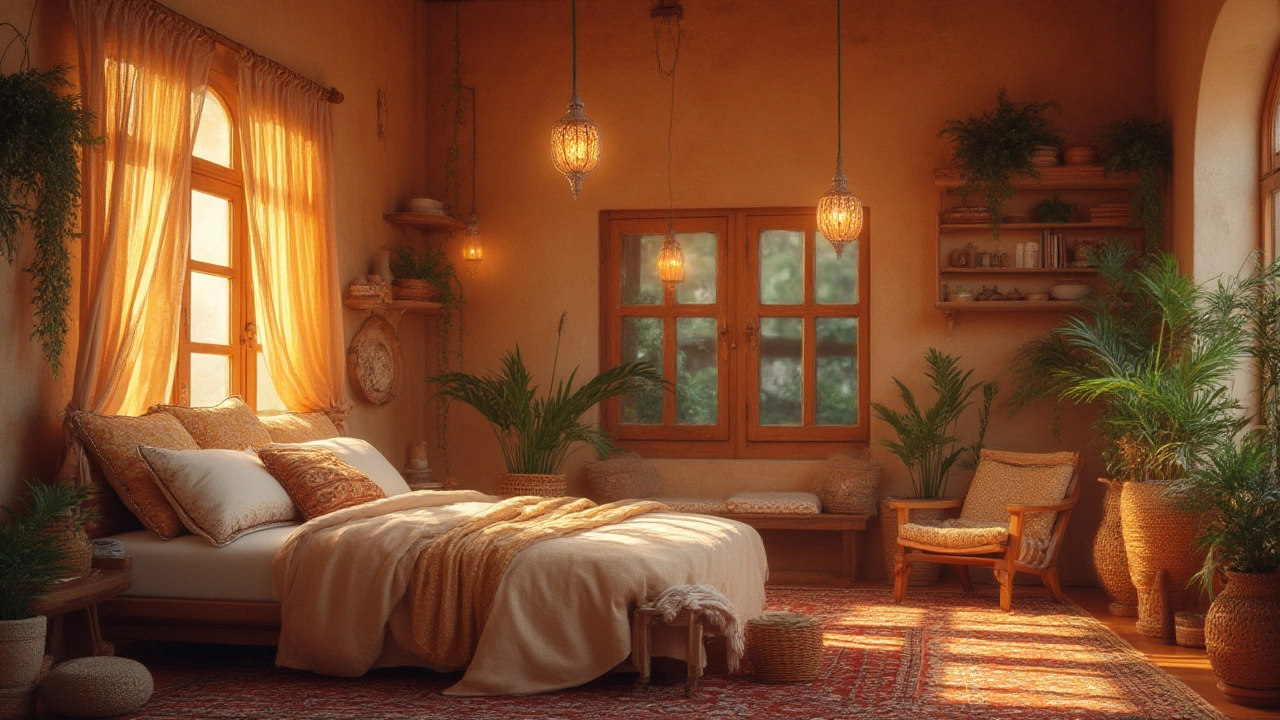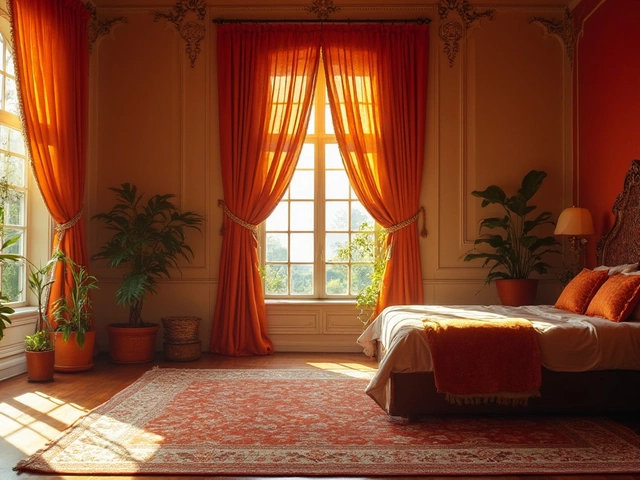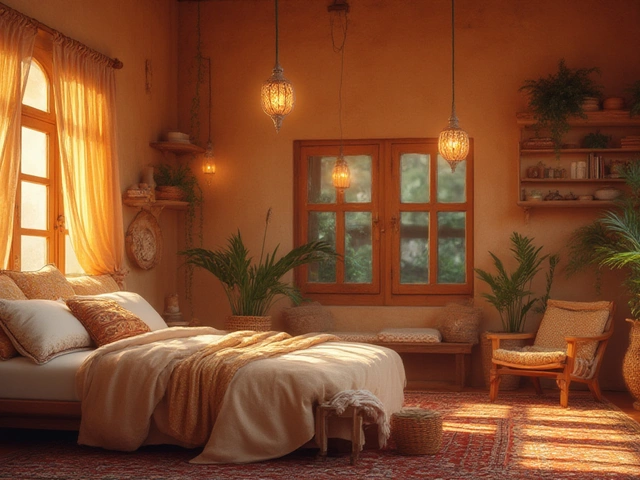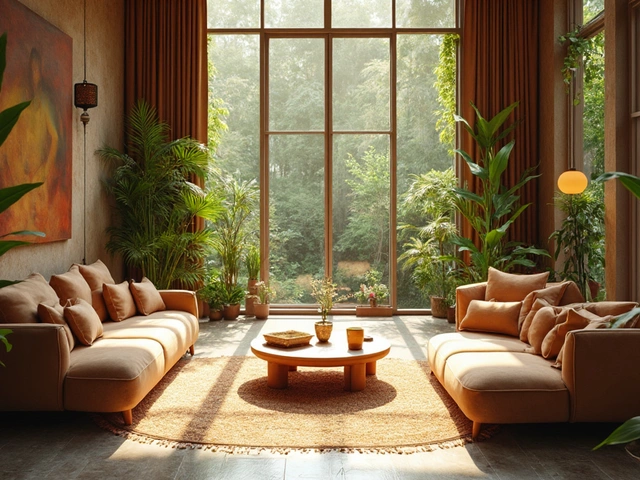Ever noticed how stepping into a hotel suite can make you instantly feel calm or inspired? But then you walk back into your own bedroom and it just feels...meh? A truly cozy bedroom doesn’t need a five-star budget, but it does need a bit of intention and a feel for what will make you want to sink into bed and sigh with relief. Bedrooms should be that one spot where the vibe matches your mood—a safe place where the weight of the world gets left at the door. It sounds dramatic, but the truth is, most of us spend more than a third of our lives in bed. That’s more time than you’ll probably spend in any other single spot, unless you count the commute on the 333 bus from Bondi. So, why settle for anything less than your own private haven?
Setting the Mood with Color, Texture, and Light
Color throws a punch in any space—bright, muted, or even monochrome. The well-known fact is that calming colors like blue, soft grey, lavender, green, and earthy tones help the mind unwind. I found “Calm Retreat,” a warm sage green, for our walls after reading that green works wonders for sleep and stress, and paired it with neutral linens. It sounds simple, but it’s wild how just changing the color shifted the energy straight away. Soft neutrals, blush tones, and warm whites are go-to choices for that ever-popular cozy feel—these palettes help rooms look larger and calmer. Heat it up with burnt orange, mustard, or rich navy if you’re adventurous. The main thing is to avoid high-energy brights like fire engine red or neon yellows. They’re proven to spike heart rate—a thing you want in a boxing ring, not under your doona.
Texture is less about what you see and more about what you touch. I used to think this was decorator mumbo-jumbo until Lila started layering throws, velvet pillows, knitted baskets, and adding a wool rug underfoot. Suddenly, Max (our dog) and Cormac were both spending more time in there! Chunky knits, linen sheets, velvet cushions, even a beautiful woven wall hanging—they all play a sensory role. It’s more than looks; when you run your hand across a knitted throw or sink your toes into a soft rug, it adds instant warmth. Swapping in seasonal textures is fun too—fresh linens or cotton for summer, nubbly knits and wool in winter.
Lighting is everything. Harsh overhead bulbs suck the life out of a bedroom, no matter how nicely it’s decorated. Instead, think layers. Dimmer switches let you control mood. String up fairy lights above the headboard, or try a Himalayan salt lamp for a soothing pink-orange glow. Bedside lamps with warm bulbs let you wind down gently. If you’re keen on mornings, try smart bulbs that mimic sunrise—those little things do magic for dragging yourself out of bed on chilly Sydney mornings. Remember, the right lighting softens hard edges and makes late-night reading (or snack-eating—no judgment) way more comfortable.
You can see the power of these three basics—color, texture, and lighting—in how Scandinavian style took over Instagram: pared back, layered, and always, always warm. It isn’t about endless knickknacks, just simple elements that make being in your room a treat day or night.
Smart Furniture Choices and Layout for Comfort
Furniture layout might be the unsung hero of a cozy bedroom. Mess this up, and your space can feel crowded, awkward, or just plain wrong, even if your color scheme is gorgeous. I made that mistake in our first Sydney flat—oversized bed, tiny room, and a dresser we had to squeeze past sideways. Learned the hard way that scale matters.
If you’ve got a roomy bedroom, float your bed away from the wall if possible; it creates instant breathing space and makes your sanctuary feel more intentional and luxe. For smaller rooms, focus on pieces that multitask. Think ottomans with storage, under-bed drawers, or bedside tables with shelves to corral books, chargers, and that ever-growing pile of ‘maybe clean, maybe dirty’ clothes.
- The bed is your anchor. A solid headboard grounds the space and gives the bed presence. Upholstered headboards are nice for softness—a pro move, honestly, if you like to read or snack in bed.
- Nightstands don’t have to match exactly; mismatched tables add character and practicality.
- Skip bulky dressers if you can use vertical space—like slim wardrobes, wall-mounted shelves, or peg rails.
- Benches at the end of the bed feel deluxe and serve as storage or just somewhere to toss your jumper.
- Full-length mirrors reflect light and make a small room appear larger—plus, they make selfies better.
One small trick is the classic ‘three feet rule’: try to leave about 90cm around the sides of the bed for easy movement (possibly less if you live in shoe-box Sydney apartments, but it’s a good target). Arrange your layout to make the entryway open and inviting. Place your bed on the wall opposite the door if you can, or so you can see the door from bed—psychologists say this actually lowers anxiety and helps with relaxation (apparently it’s hard-wired in us from cave-dweller days).
Keep surfaces clear but not barren. Organize bedside tables with trays or bowls to hold keys or jewelry. Rotate out seasonal books or candles to keep dust and clutter at bay. If you work from your bedroom, zone off a corner with a small desk or ladder shelf and keep work out of sight when it’s time to sleep—your future self will thank you.

Personal Touches Without the Clutter
Your bedroom should feel unique, not straight from a catalog. Personal touches—the stuff that tells your story—turn a generic space into a real retreat, but too many and you end up with clutter city. I walked this fine line after Cormac made me a handprint artwork in daycare; now it sits framed over my bedside, and somehow it works next to the vintage music poster from my uni days.
Try these ideas for adding character:
- Hang prints, artwork, or family photos you actually love, not just ones that match your sheets.
- Display a few favorite reads, journals, or travel souvenirs—rotate them every few months for fresh inspiration.
- Add plants. They purify the air and bring life to a room. Beginners: Snake plants and pothos survive low light and thrive on neglect. Want a challenge? Go for a fiddle-leaf fig.
- Invest in quality bedding—it’s not just a feel-good purchase. Research by the National Sleep Foundation shows that 77% of people say a comfortable mattress and sheets are critical to good sleep. Look for natural fibers like cotton, linen, or bamboo—they breathe best.
- Pick a signature scent. A lavender pillow spray, vanilla incense, or even an oil diffuser creates a sensory ritual. Scent is strongly linked to memory, so find something that signals 'time to rest' to your brain.
Less is more, but that doesn’t mean barren. Group a few meaningful things, not everything you own. Trays, baskets, and shelves help keep your space organized. And let’s get real—one rogue laundry basket works wonders to keep your place looking Instagram-ready for surprise visitors (or for your own peace of mind).
Keeping Your Sanctuary Clean, Calm, and Tech-Smart
Even the most stylish bedroom loses its charm if it feels chaotic. You don’t need to be a neat freak—Lord knows with Cormac, Max, and sometimes Lila’s late-night Netflix snacks, our bedroom never looks like a magazine shoot. But a few small routines keep it feeling like a getaway spot rather than a dumping ground.
The most effective trick we’ve tried is the ‘two-minute tidy’—just spend two minutes each morning putting clothes away and straightening the bed. According to a 2023 survey by Sleep Junkie Australia, people who make their bed daily feel 25% happier with their bedroom and report falling asleep faster. Sound silly? Give it a shot—it honestly changes the whole mood. Also, keep surfaces clear—nobody needs to look at tangled chargers or yesterday’s takeaway containers when they’re winding down.
Another underappreciated thing: air quality. Open a window for five minutes even in winter, or invest in a small HEPA purifier, especially if you live in a city apartment. Plants help, too, but don’t try to turn your room into a jungle or you’ll end up with gnats (learned that the hard way, trust me).
Let’s talk tech. Your bedroom should be the ultimate switch-off zone, but the reality is, our phones, tablets, and e-readers often sneak in. Set up a charging station outside the bedroom door, or at least on the far side of the room. Replace your regular alarm clock with a wake-up light—Philips and Lumi both make models that simulate sunrise to help you wake gently.
Noise can make or break your sleep. Living in Sydney, there’s always a distant hum or late-night party somewhere nearby. A white noise machine or even just a fan helps smooth over sudden sounds that might wake you. For heavier sleepers, blackout curtains are a must—studies out of Monash University showed they help you sleep deeper by blocking the glow from street lights or early sunrises. Here’s a quick breakdown of how small changes can impact your bedroom comfort:
| Change | Immediate Impact | Long-Term Result |
|---|---|---|
| Fresh paint in calming colour | More relaxed atmosphere | Better sleep quality |
| Add layered textiles | Warmer, more inviting space | Increased sense of comfort |
| Declutter surfaces | Room feels larger | Less stress, easier to clean |
| Use blackout curtains | Darker sleeping environment | Deeper, more restful sleep |
| Introduce plants | Air feels fresher | Cleaner air, happier mood |
There’s no formula that fits every person or space—your cozy, beautiful bedroom should reflect the things that help you rest and recharge. Get creative, change things until they fit your lifestyle, and don’t measure yourself against the perfectly staged rooms you see online. At the end of the day (literally), this is your sanctuary. Make it a place you actually want to spend time—whether you’re reading, napping, or hiding from the rest of the household for just five more minutes.





